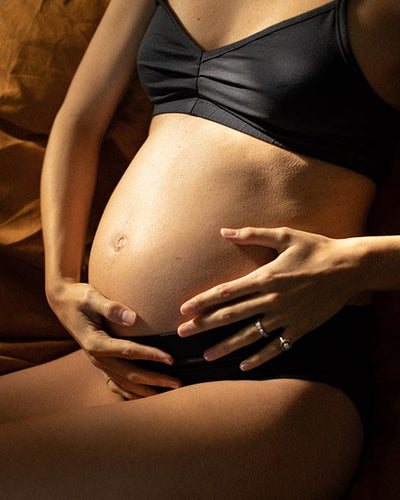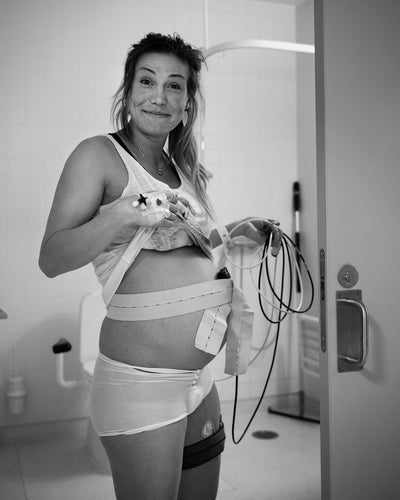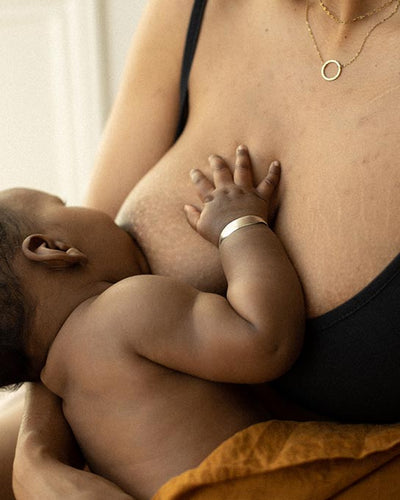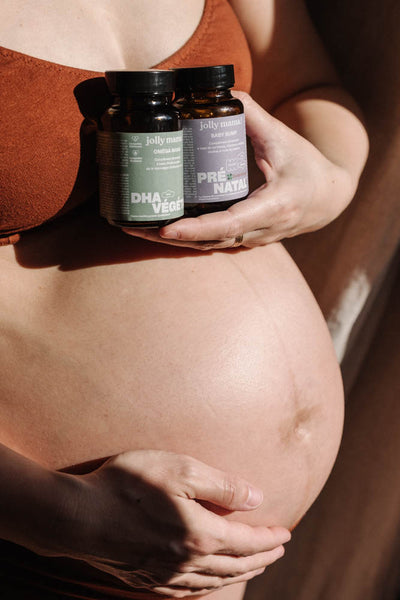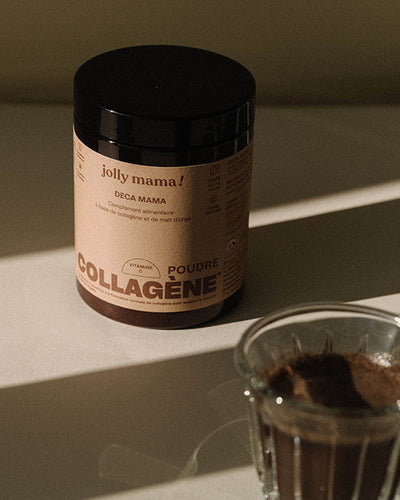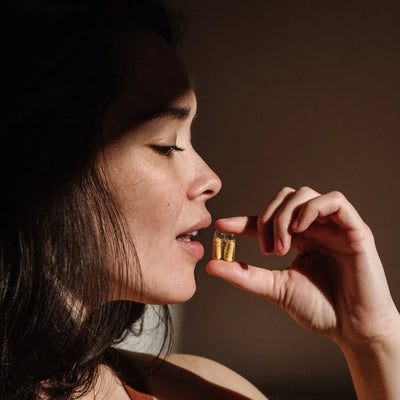Votre statut nutritionnel ne devient pas important le jour où vous tombez enceinte… Il va être important avant même cela, car il va influencer la qualité de l’ovulation, le développement embryonnaire, et même tout le déroulement de votre grossesse.
Par exemple, une étude a montré que la prise régulière de multivitamines pendant la période périconceptionnelle est associée à une réduction de 20% du risque de prééclampsie [8].
Une étude sur la supplémentation périconceptionnelle en multivitamines a montré une réduction significative des anomalies du tube neural et des anomalies des voies urinaires et cardiovasculaires [9].
De même, l'apport périconceptionnel de thiamine (vitamine B1), de niacine (vitamine B3) et de vitamine B6 contribue à la prévention des fentes orofaciales [10].
Voici à présent un focus sur comment certains nutriments vont avoir un impact majeur durant cette période.
Folates (vitamine B9)
La période périconceptionnelle (deux à trois mois avant et après) est une période critique pour optimiser la fonction des gamètes et le développement précoce du placenta. Au cours de cette période, une supplémentation en vitamine B9 contribue à réduire le risque d'anomalies du tube neural du fœtus (cerveau, de la colonne vertébrale et/ou de la moelle épinière) jusqu'à 70% [11].
D'autres avantages de la supplémentation en folates pendant la périconception peuvent inclure une diminution du risque de pré-éclampsie, de fausse couche, de faible poids de naissance, d'insuffisance pondérale, de mort-né, de décès néonatal et d'autisme chez les enfants [12] [13] [14].
On recommande une supplémentation systématique en acide folique au moins 4 semaines avant la conception et jusqu’à 8 semaines après. On privilégie la forme méthylée, et on fuit l'acide folique pendant la grossesse et la conception.
Choline
La choline, tout comme les folates, doit être prise en projet bébé car elle peut jouer un rôle sur le risque d’anomalie du tube neural (qui se développe très tôt en début de grossesse).
Par exemple, dans une étude d’observation sur des mamans ayant eu des enfants atteints d’anomalies du tube neural, en comparaison à celles dont les enfants n’en ont pas eu, ils ont remarqué une diminution des risques de grossesse affectée par une anomalie du tube neural de 51% pour des apports périconceptionnels plus élevés en choline (correspondant aux apports satisfaisants) [15]. Prendre un supplément de choline grossesse peut être intéressant.
Fer
L'anémie due à une carence en fer avant la grossesse est associée à une croissance réduite du nourrisson et à un risque accru d'issue défavorable de la grossesse [16]. De faibles concentrations de ferritine en début de grossesse ont été associées à une modification de la taille du placenta [17]. Notre complément fer femme enceinte vous aidera à combler vos besoins.
Zinc
La carence en zinc avant la fécondation pourrait compromettre la croissance fœtale et placentaire ainsi que la fermeture du tube neural [18] [19].
Iode
Un apport en iode adéquat autour de la période de la grossesse est important pour le développement cognitif de l’enfant.
Dans une étude au Royaume Uni, où la carence en iode est censée être faible, ils ont montré que des apports inférieurs à 150 μg augmentaient le risque que l’enfant ait un QI verbal faible, une mauvaise précision et compréhension de lecture [20].
Vitamine B6
Dans une étude, ils ont constaté que par rapport aux personnes consommant le moins de vitamine B6, celles qui en consommaient le plus avaient 2 fois moins de risque de perte de grossesse précoce [21]. Les effets d'un mauvais statut maternel en vitamine B6 avant la grossesse sur les événements précoces de la grossesse pourraient s'expliquer par le fait que la vitamine B6 affecte l'implantation et le développement précoce du placenta [22].
On observe également une augmentation du risque d’accouchement prématuré en cas de carence en vitamine B6 durant la période préconceptionnelle [23].
Vitamine B12
Une étude a montré que le risque d’accouchement prématuré était inférieur de 60% chez les mamans ayant un bon apport en vitamine B12 avant la fécondation par rapport à celles présentant une carence en vitamine B12 [24].
Vitamine D
Dans une étude, ils ont rapporté des taux accrus de grossesse et de naissance vivante chez les mamans ayant des concentrations sériques suffisantes en vitamine D. Fait crucial, ces observations dépendaient des concentrations de vitamine D avant la conception, mais pas à 8 semaines de grossesse, ce qui montre l’importance majeure de la vitamine D durant cette période [25] ! Des niveaux optimaux de vitamine D sont nécessaires pour augmenter l'efficacité de l'absorption du calcium, indispensable pour le développement du squelette du futur bébé. Notre vitamine D grossesse aide à combler ses besoins.
DHA
Des études ont montré que les mesures sur la qualité des embryons étaient améliorées chez les femmes qui consommaient plus de poisson [26] et plus de DHA [27], soutenant l’hypothèse que la DHA jouerait un rôle favorable dans le début de la grossesse. Si vous consommez peu de produits de la mer, ou d'oeufs, la prise d'un complément oméga 3 grossesse riche en DHA est à envisager.
L’alimentation globale
Bien sûr, les vitamines seules ne font pas tout ! L’alimentation a avant tout un impact majeur sur la grossesse.
Des études ont suggéré que les habitudes alimentaires jusqu'à trois ans avant la grossesse, caractérisées par une consommation élevée de fruits, de légumes, de légumineuses, de noix et de poisson et une faible consommation de viande rouge et transformée, sont associées à un risque réduit de diabète gestationnel [28], de troubles hypertensifs de la grossesse [29] et de naissance prématurée [30].
La prise d'un complément alimentaire grossesse est simplement une assurance de couvrir ses besoins, mais ne remplace pas une alimentation adaptée.

